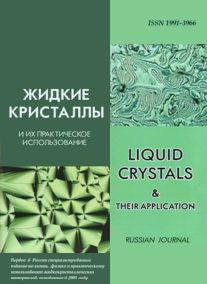|

|
Liquid Crystals and their Application
Russian Journal Zhidkie kristally i ikh prakticheskoe ispol'zovanie Жидкие кристаллы и их практическое использование |

|
|

|

|
|
|
Menu

|
|
|
|
|
Zhidk. krist. ikh prakt. ispol'z. = Liq. Cryst. and their Appl., 2017, 17 (2), 67—77.
DOI: 10.18083/LCAppl.2017.2.67 |

|
|
Non-Newtonian Flow of Structured Systems.
XXII. Structural Viscosity and Elastisity of Polypropylene Melt
|
E. A. Kirsanov, Yu. N. Timoshin
|
Author affiliations
State University of Humanities and Social Studies,
30 Zelyonaya St., Kolomna, Moscow Region, 140411, Russia
E-mail: Kirsanov47@mail.ru
|
|
Abstract
In this article, a structural rheological model is used to explain the rheological data obtained from dynamic measurements of polypropylene melt with different molecular weight and similar polydispersity indices. The structural rheological model assumes the existence of separate intervals of shear rates (or cyclic frequencies of shear vibrations) corresponding to different states of the structure of the polymer sample. The model explains the changing shape of the rheological curves as a result of changes in the structure of the fluid, which is different at various intervals of the cyclic frequency. Viscous and elastic characteristics are considered separately. The curves describing the dependence of the storage modulus (elastic modulus) and the loss modulus (viscous modulus) on cyclic frequencies, in general, contain three characteristic plots. The peculiarities of the rheological curves with decreasing molecular weight and increasing temperature of the polymer sample are considered. The value of the coefficient of compactness ? increases with increasing temperature and decreasing molar mass of the polymer, which is consistent with the findings of structural rheological model. The structural part of the viscosity and the structural part of the elasticity increase with increasing molecular weight in accordance with the power law and decrease with exponential growth with increasing temperature. Generalized rheological curves for elastic modules and viscous modules in reduced coordinates are constructed.
Keywords: polymer melts, polypropylene, structural rheological model, storage modulus, loss modulus
|
|
|
|
|
|




